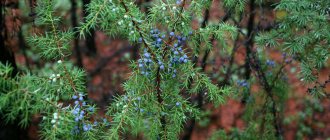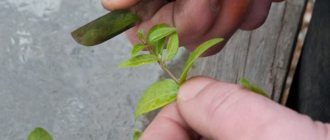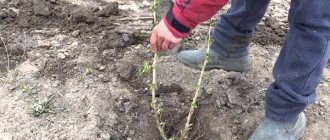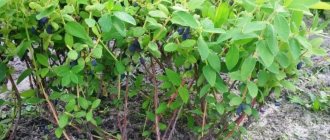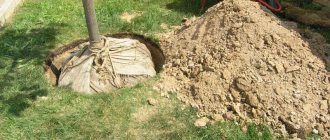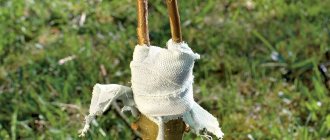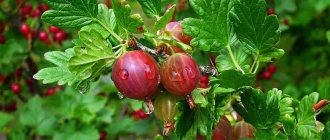Astilbe, a perennial ornamental flower, is loved by gardeners and is actively used in landscaping their plots. A practical plant, no need for annual sowing of seeds or growing seedlings.
It is enough just to provide proper care, which significantly saves time and effort. However, although initially pleasing with its decorativeness and good growth, over time astilbe blooms less and requires periodic rejuvenation. In addition, it can invade neighboring areas. How is astilbe transplanted in the fall and what care measures does it need after that?
Astilbe plant
The astilbe flower is a member of the Saxifraga family. You can meet it in East Asia, Japan or North America (where it comes from). In Russia, astilbe has also been grown quite readily lately. Depending on the variety, the height of this perennial shrub varies from 15 cm to 200 cm. The length of the fluffy panicles is also ambiguous and can be 10-60 cm. The color range of astilbe is quite diverse. Its flowers can be lilac, red, pink and white.
WHERE TO BUY ASTILBES SEEDS
The scientific and production association “Gardens of Russia” has been introducing the latest achievements in the selection of vegetable, fruit, berry and ornamental crops into the widespread practice of amateur gardening for 30 years. The association uses the most modern technologies and has created a unique laboratory for microclonal propagation of plants. The main tasks of the NPO "Gardens of Russia" is to provide gardeners with high-quality planting material for popular varieties of various garden plants and new world selections. Delivery of planting material (seeds, bulbs, seedlings) is carried out by Russian Post. We are waiting for you to shop:
An amazing plant with incredibly bright flowers is slowly beginning to win its place in the garden plots of our country. The name of this perennial is astilbe. One of the main advantages of this truly fascinating plant is the huge variety of varieties. During the entire flowering period, the plant retains its decorative effect, thanks to its amazing leaves. In nature, astilbe can be found in East Asia and North America. In total, 30 species of plants are known, 10 of which are successfully cultivated in our gardens.
Of the ten species, breeders were able to grow a large number of varieties. Conventionally, all of them can be divided into dwarf (up to thirty centimeters in height), short (from thirty to sixty centimeters), medium tall (from sixty to ninety centimeters) and tall (from ninety centimeters to one and a half meters). In nature, astilbe prefers to grow along river banks and forest edges. One of the main advantages of astilbe is its exceptional hardiness and increased frost resistance, so the plant survives even the harshest winters well. But still, flowers need to be prepared for the onset of the cold season.
Advantages
Astilbe has many advantages:
- Completely unpretentious in care.
- The process of its reproduction is quite simple.
- It perfectly drains the soil (for example, after rains), as it is very moisture-loving. Therefore, it is recommended to plant it along the walls of houses (in order to protect the foundation from excess moisture).
- The shadow is not a hindrance to it, that is, it grows well in places that receive little sunlight.
- Throughout the summer months, astilbe delights everyone around with its lush blooms.
Varieties
There are a huge number of types of astilbe. Among them are hybrid varieties (about 40), Japanese varieties, Korean and Chinese.
Species obtained by crossing the main base species (Astilbe David) with others are called Anders hybrids. Their distinctive characteristics are: spherical, spreading, and the shape of the bush in the form of a pyramid. Bushes with a height of about 1 meter have the longest flowering period (35-45 days: from July to August). The most popular varieties among summer residents include: Dynamite, Gloria, Ruby and Amethyst.
Short (up to 80 cm), cold-resistant and the earliest to bloom, Japanese varieties easily take root in new places and continue to decorate the garden area even after flowering. The most common varieties are Europe, Montgomery, Rhineland and Deutschland.
Tall (about 1.1-1.2 m) Chinese varieties, with fairly large basal leaves and dense inflorescences (35-40 cm long), have successfully taken root on Russian soil. Main varieties: Vision in Pink, Purpurlanze and Vision in Red.
Regardless of the type, such measures as planting astilbe in the fall and caring for it in open ground are important in caring for the plant.
What is the best place to plant
The easiest thing in caring for astilbe is to find a suitable place for planting. The fact is that the plant is so unpretentious that it can be planted where other flowers simply cannot survive. A huge advantage of this plant is that it can bloom luxuriantly in dense shade, and also that it can be planted in wetlands and lowlands where water often stagnates. An abundance of moisture in the soil is a prerequisite for the successful cultivation of astilbe.
True, certain varieties have appeared that need sun. These plants must be watered and mulched generously to retain moisture in the soil.
There are some nuances that should be considered when choosing a landing site:
- The plant does not tolerate very close proximity to trees. The fact is that the root system of such neighbors significantly weakens the astilbe and does not allow it to develop properly.
- The plant really likes soils with high groundwater levels. In this case, astilbe is guaranteed to receive moisture throughout the summer.
- The flower does not tolerate drought well. Therefore, in regions with a hot and dry climate, the plant looks depressed and has poor flowering.
When replanting astilbe in the fall, you need to take these features of the plant into account.
Correct care
After successfully planting a plant, you should provide it with proper care so that flowering can be enjoyed for many years.
When you begin to choose a place for planting, consider when the plant begins to bloom. The dates may vary, from the end of June to September. Early and late varieties are not picky about the conditions; they will bloom beautifully both in the shade and in the sun. But mid-bloomers prefer a shady area; the scorching sun will significantly shorten the flowering time.
Thanks to different varieties, you can create a composition in your flowerbed that will bloom throughout the warm season.
Astilbe will not tolerate prolonged drought, but it grows magnificently in moist soil. Able to tolerate stagnant waters. Will destroy flowers:
- It's sunny.
- Lack of constant watering and rain.
- Infertile soil.
During periods of drought, it is recommended to water astilbe twice a day.
Mulching plays a very important role in the life of flowers:
- Protects the root system from overheating.
- Retains moisture.
- Allows the soil to remain loose.
- Prevents weed germination.
- Creates the necessary conditions for the winter period.
Mulching is carried out immediately after planting flowers; the layer should be about 5 centimeters.
Astilbe will not do without fertilizers. It needs phosphorus and potassium for full flowering and development. The first feeding is carried out in the spring, the second - during the period of bud setting, the third - in the autumn, when the plant has flowered. The soil is carefully loosened and mulched.
If the planting conditions were favorable and the care was appropriate, the flowers develop very quickly and grow better. Old roots will crowd out young ones, the plant will begin to wither, flowering will decrease, and the inflorescences themselves will be very small. Therefore, a transplant is necessary every 3-5 years. The period depends on the variety and speed of growth.
Sometimes, astilbe may not be replanted for a long period, about 20 years. In this case, care should be more attentive.
Interesting fact! If you plant different varieties of astilbe in the garden, you will get a riot of colors. When only one color is present, the effect of incredible splendor and volume will be created. You can create other compositions on your site, which one is decided by each gardener individually.
Planting scheme
The planting scheme for such an ornamental plant as astilbe is quite simple. If you want to see tall, perennial bushes on your site, then they should be planted at a distance of 50 cm from each other. If you are ready to be content with low-growing representatives of this species, then each subsequent plant can be placed 30 cm from the previous one.
That is, when transplanting astilbe in the fall, you must adhere to certain recommendations described above.
The nuances of propagating a bush by division - how to plant and care for a seedling
After digging, the flower can be propagated. To do this, the bush is divided into 3-4 parts using scissors. It is recommended to renew the plant every 4 years. This can be understood when astilbe produces small flowers and not very abundant flowering. Daughter flowers are planted in holes prepared in advance. The distance between the bushes should be 30 cm, and between the rows 50 cm. Mineral or organic fertilizer is added to each hole, after which the plant is planted and the roots are buried with soil. Water is poured on top.
The first 2 weeks after planting, seedlings require increased watering every 3 days. Then it is reduced to 1 time per week. It is also recommended to carry out preventive treatment against pests and infections.
Timing of planting or transplantation
Despite all the unpretentiousness of astilbe, to obtain a positive result in its cultivation it is necessary not only to choose the right place and plant in a certain way, but also to comply with the timing of agricultural work.
The best time to plant or replant astilbe in the fall is the beginning of September, and in the spring - the end of April and the beginning of May. When planting a plant at the beginning of autumn, you need to correctly calculate the time that the seedling will need to fully strengthen before the onset of cold weather and frosts.
The time to transplant astilbe in the fall is determined by the end of its flowering. There is no point in postponing this work to a later date. The plant should be placed in a new location about a month before the air temperature drops below +5 degrees. Some gardeners are interested in when it is preferable to transplant astilbe, in spring or autumn? Of course, it is better to carry out this work in the spring, since in this case you will be able to see the first flowering at the end of the season. If there is no such goal, then replant in the fall.
How to care for a flower after
After transplantation, the flower requires intensive care. It is important to ensure that the bush takes root in another place.
Organizing proper watering
In the first week, astilbe is watered intensively. One bush spends 5-6 liters of water. Watering is repeated twice a week. Next, irrigation is reduced to once a week.
We'll feed you on time
How to feed the bush in a new place? For feeding, mineral fertilizers containing nitrogen, phosphorus and potassium are used. Organic fertilizers are also suitable. When moving to a new place, the soil is fertilized. Repeated feeding is carried out in the fall, before preparing for wintering.
We perform formative pruning
To ensure that the bush is lush and does not grow sideways, it is necessary to trim the side shoots. This will not only improve the quality of the plant, but also give lush flowering. Astilbe will not take up much space and interfere with the development of neighboring crops.
Preventing plants from insects and diseases
Astilbe has strong immunity to infections, fungi and harmful insects. It is susceptible to attack when the immune system is weakened. This happens with improper care, when changing the place of growth, when the plant is overwatered and exposed to direct sunlight.
To avoid diseases, after transplantation it is necessary to carry out preventive treatment of the plant. For this purpose, insecticides and fungicides are used.
Important! Spraying is recommended before flowering begins.
Mulching
Mulching astilbe during the growing season helps retain moisture and protects against attack by harmful insects. For this, fallen leaves, straw, moss, and special materials are used.
Since the flower is a perennial, it must be mulched for the winter. It tolerates frost well, but there is a risk of damage to the roots, after which the astilbe dies. After pruning the upper shoots, part of the roots is removed and covered with fallen leaves or moss. The top is covered with a special breathable fabric.
How often to transplant astilbe
What is the purpose of planting astilbe in the fall and caring for it in open ground? According to flower growers, astilbe should be propagated and replanted once every four years. It is during this time that the rhizome of the plant grows to such a size that it begins to become bare, rising above the soil layer. This can lead to the flower dying with the onset of frost. However, if after 4 years the plant is still in full bloom, then you should not look for another place in the garden for it, it is better to simply feed it to help it bloom magnificently and for a long time.
Methods for propagating astilbe at home
Astilbe is propagated in one of three ways: by seeds, buds or dividing the bush.
Seeds
The plant is propagated using seeds exclusively for selection.
There is no point in collecting seeds of hybrid varieties in your garden, as they quickly degenerate. However, you can purchase high-quality varietal seeds for planting on your site.
To improve seedlings, seed material must be properly prepared for planting. To do this, the seeds are placed for 20 days in a place where the temperature is kept at +/- 4°C. Then they are transferred to a well-lit, warm room with a temperature of 18-22°C. The seeds are sown on moist soil, and after the procedure the soil is not covered. After a couple of weeks, small seedlings should appear that can be planted in shaded beds
It is important to constantly follow the watering regime.
Cuttings
By cutting astilbe we mean its propagation by buds,
which allows the plant to reproduce much faster than with seeds. When the shoots grow back in the spring, they are carefully cut off along with part of the rhizome and the cuts are treated with ash. The resulting cuttings are planted in a mixture of gravel and peat (1:3) and covered with transparent material, for example, plastic film. The planting depth should correspond to the size of the root, but so that the bud is covered with soil by half a centimeter. The cutting takes about a year to take root. That is, it will be possible to plant it in open ground next spring.
Astilbe can be replanted throughout the season, even during the appearance of buds and flowering, but always with a clod of soil and watering.
Astilbe can grow in one place for up to 10 years, but if you want to admire the lush flowering of the bush every year, you need to divide it and replant it after 3-4 years, or at least after 5 years.
This is due to the aging of the rhizome. With age, its buds die off and the flowering of the bush weakens.
In addition, astilbe has one more feature - the rhizome grows upward every year, rises and after a few years, together with the buds, appears above the surface of the earth.
In this case, the kidneys can be severely damaged due to heat in summer or frost in winter. Then flowering will be weak or stop altogether.
Astilbe constantly needs moisture, and in hot weather without watering it can die. It is preferable to divide the bush in early spring or autumn, in September.
The divisions must have at least 3 buds at the base of the roots.
Preparing the soil for planting
How to prepare the soil for replanting astilbe in the fall? What soils does she like? She loves moist, light (loose), humus-rich and slightly acidic soil, seasoned with organic matter. In the fall, before planting (or transplanting), we perform the following work:
- We dig the ground to a depth of about 30 cm.
- We remove weeds (always along with the roots) and any debris.
- We add peat, rotted manure and humus (1 bucket of the mixture is enough for 1 m²).
In the spring, wanting to plant astilbe, we dig a small hole (no more than 25-35 cm deep), fill it with complex fertilizer in granules (about 30 g), ash (half a glass) and compost; mix everything thoroughly and water, sparing no water. We wait until the liquid is completely absorbed into the soil, and only then we plant the prepared seedling, dig it in with earth, compact the soil around the plant to avoid the presence of voids filled with air, add soil (if necessary) and mulch with sawdust, bark, peat or straw. The layer height should be at least 4-7 cm.
Important points in growing flowers
Before winter, it is important to protect bushes that have not been rejuvenated from damping off. For this purpose, they need to be covered with dry materials - leaves, spruce branches, brushwood. Cover the top with film with an air gap. Gardeners sometimes do not advise pruning plants before winter cold, since the leaves and stems protect the rhizomes from the cold under the snow. In this case, it is better to prune before the shoots begin to grow in the spring.
Beautiful astilbe flowers are combined with mountain weed, tulips, lilies of the valley, irises, and hosta. They are used to decorate garden plots, alpine slides, artificial ponds and borders. By planting different types and varieties of astilbe in one flowerbed, you can create a harmonious and very beautiful flower arrangement.
Most people are interested in how quickly flowers grow. Over the course of a year, from the root, the plant expands by 3 to 5 new shoots. Since astilbe grows rapidly, it is better to plant it at a distance of at least a meter from other flowers. In order for the shoots to be strong and grow rapidly, it is necessary to systematically rejuvenate the bushes.
Transplanting astilbe to another place in the fall
There are general recommendations when transplanting a flower:
- The plant feels comfortable in one place for 4-5 years. If the flowering is no longer so lush, then this is a sure sign that it is better to replant the astilbe.
- These works can be performed not only in spring or autumn, but also during the entire warm period, even when the plant is blooming and there are many buds on it.
- Transplanting astilbe flowers in the fall at the dacha is carried out for various reasons, among which reproduction plays an important role. For this plant it is carried out mainly by dividing the rhizome. Other methods are cuttings and renewal buds. In addition, planting astilbe with seeds in the fall can also be done, although many still prefer to propagate by dividing an overgrown bush.
- You can divide a young plant with your hands. To separate parts of the “aged” astilbe rhizome, you cannot do without a shovel.
The place where the rhizome is divided should be generously sprinkled with ash to protect it from rotting and the penetration of bacteria living in the ground.
In order to injure the flower less, it is advisable to grab more root soil along with the rhizome and transfer it all to a new place. After transplanting, the plant needs to be watered abundantly.
We prepare a hole for a new plant as indicated above. We plant the division in it so that the depth of the renewal buds is 5-6 cm. After planting, we water the astilbe generously so that the soil is properly compacted. In a couple of days the bush will come to its senses and begin its life.
In the first year, the plant will be weak, so gardeners recommend removing all flower stalks on it so that the root system develops better.
We hope our recommendations will help you in carrying out such work as transplanting astilbe in the fall to another place of your choice.
All the subtleties of transplantation
As you know, the roots of astilbe grow upward, and after a while they will appear on the surface. Various weather conditions will damage them (heat, frost). Because of this, flowering may be completely absent. In order not to create an earthen mound under the plant, it is replanted.
Astilbe may not be replanted for many years, but its appearance will suffer as a result, flowering will be sparse, and the shrubs will generally lose their lushness. It is recommended to replant flowers every 3-4 years. It is at this time that the root system begins to age, which negatively affects flowering. The bushes lose their attractiveness, the buds die off. Also, replanting will be required when the soil is depleted.
You probably need to start with when to replant the flowers. Astilbe constantly needs a moist environment, especially in hot weather. Therefore, the most optimal time for replanting is autumn or spring. During this period there is no such hot weather. Gardeners recommend replanting in early September or late August.
Astilbe can be replanted even when the first buds have formed on it. The procedure is carried out very carefully, leaving an earthen lump on the roots. Next, careful watering will be required.
We can conclude that transplantation, even during the growing season, will be successful if everything is done correctly.
During transplantation, the roots of the flower must be trimmed with a sharp object to cause minimal harm. If you are dividing a bush, then each part should have at least 3 buds near the root. After you have divided the bush, place its parts in a container of water. Thus, the development and further survival of the flower will improve.
When planting astilbe bushes, maintain a distance of up to 40 centimeters between them. If planted tightly, the flower will bloom sparingly and the leaves will not be able to grow.
Let's summarize the results of the transplant:
- Young flowers are very easy to divide by hand. Older plants, with a massive root system, are divided using a sharp object (shovel). You can separate part of the bush without digging it up completely.
- Humus is added to the prepared hole. He also recommends feeding with minerals.
- After water has been poured into the hole, you should wait a little while it is absorbed.
- The soil is carefully shaken off the roots and the plant is planted.
- The soil around the bush is compacted a little. If necessary, add a little earth. This is done to eliminate emptiness.
- After planting, the flowers are watered again to eliminate air gaps.
After transplantation, in two days, the plant will begin to grow.
On a note! If you divide the bush in the fall, there should be about 6 buds on each part. In this case, wintering will be painless. The foliage is cut off, it is better to leave the cuttings.
We'll feed you on time
It is optimal to feed astilbe three times a year:
- We make the first fertilizing at the very beginning of spring, when young shoots have already begun their development. For these purposes we use complex nitrogen-containing fertilizers.
- We give the second phosphorus feed after flowering.
- We carry out the third in the fall, when flowering has ended. This time we will limit ourselves to liquid (to avoid burns on plant stems) potash fertilizers.
We make pruning
In late autumn, the entire above-ground part of the plant must be cut off, leaving only very small stumps. It is also necessary to add mulch to astilbe in the fall. This will protect the plant from the cold. Particular care must be taken when replanting astilbe in the fall in Siberia and other regions with harsh winters. To prevent plants in a new place from dying due to the fact that their root system has not yet become strong and hardy, it is necessary in the fall, as soon as the air temperature reaches -8-10 degrees Celsius, to cover the young seedlings with spruce branches or other covering material.
Caring for astilbe in the fall and preparing for winter
It is not necessary to remove dry inflorescences immediately after flowering. They are very attractive and will decorate your garden until autumn.
But in late autumn (when preparing astilbe for wintering), all stems need to be cut off at the root and the plant should be mulched well.
In the fall, you can also divide astilbe, but the planted divisions must not only be thoroughly mulched, but also covered with spruce branches. Otherwise, in winter, young plants may freeze.
Mature plants safely tolerate frosty winters, but can suffer during thaws, which are sharply replaced by cold snaps, and recurrent spring frosts. Therefore, in regions with an unstable climate, it is recommended to cover adult specimens with spruce branches or spunbond.
Pests
Despite the fact that astilbe is very resistant to many diseases, and it is not afraid of pests, sometimes “troubles” such as the formation of brown and yellow spots on leaves affected by slobbering pennix occur. These pests suck the juice from the leaf tissue, which destroys not only individual leaf plates, but the entire bush. You can fight pennies using various insecticides, for example, Karbofos.
In addition to pennies, nematodes (strawberry and root-knot) can also attack astilbe. The first causes deformation of the leaves, and the second causes significant damage to the roots. These pests do not tolerate drugs such as Fitoferm. Using it, you can completely get rid of nematodes.
